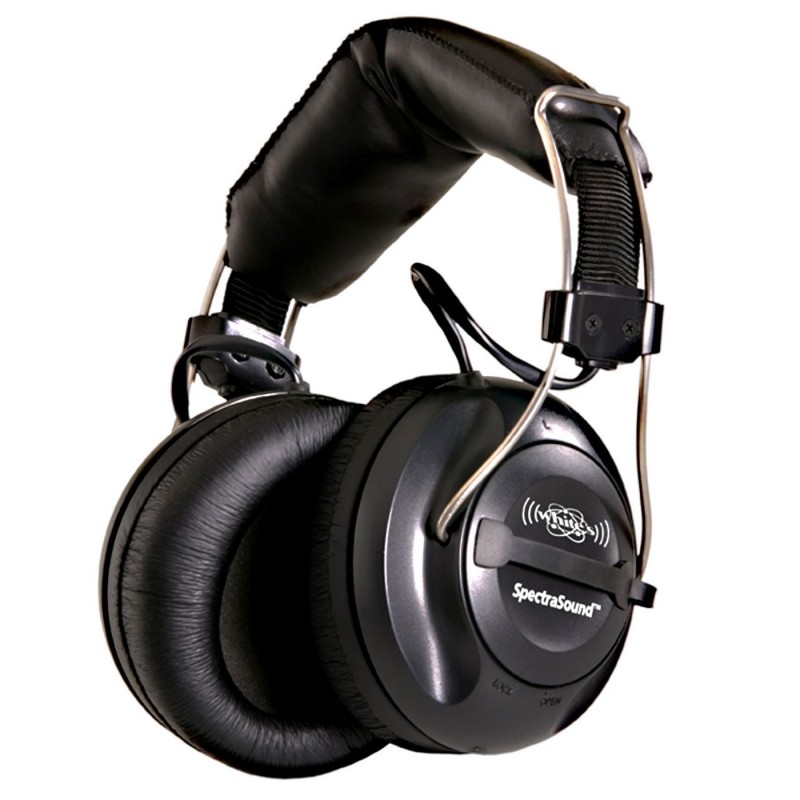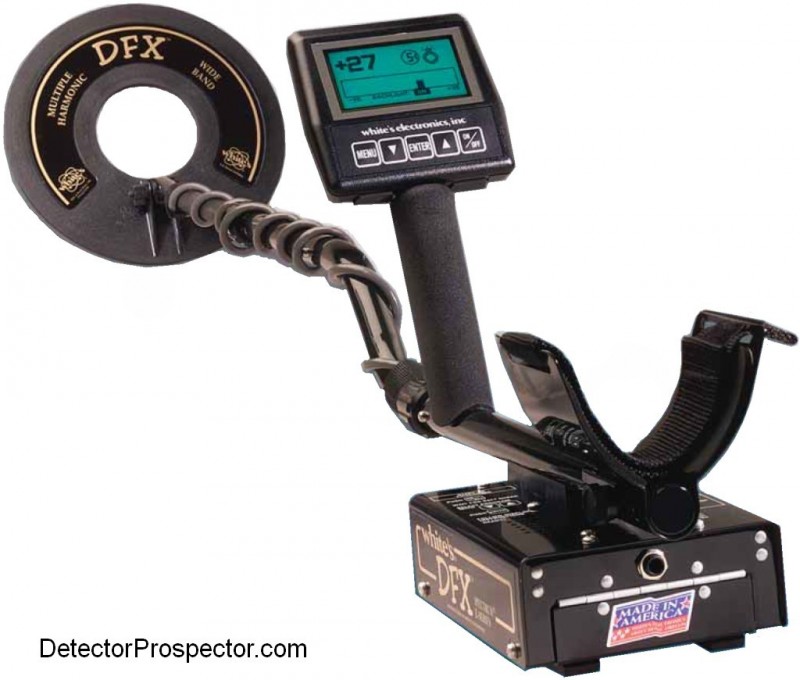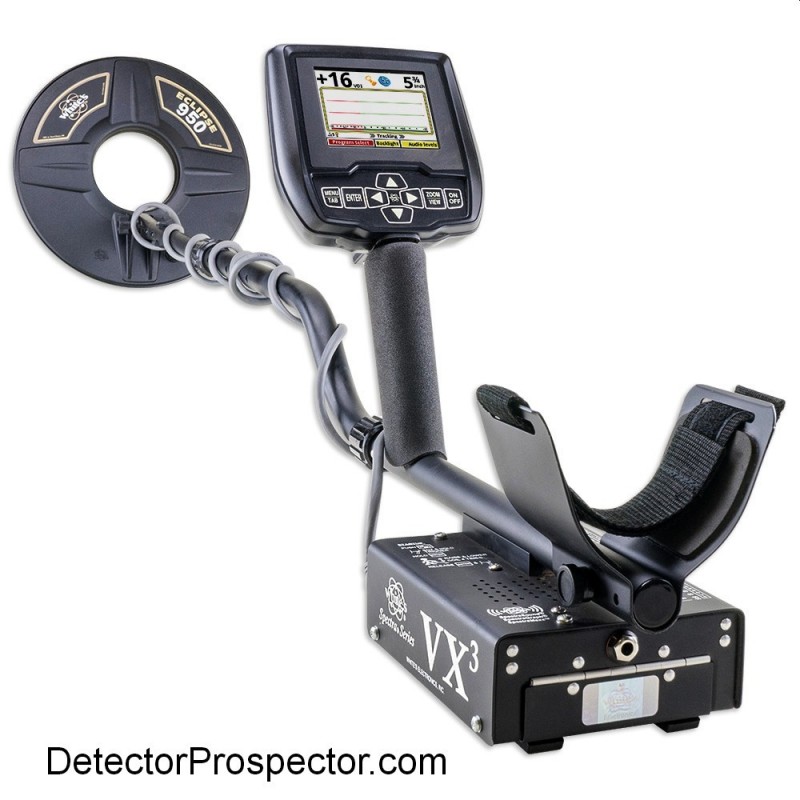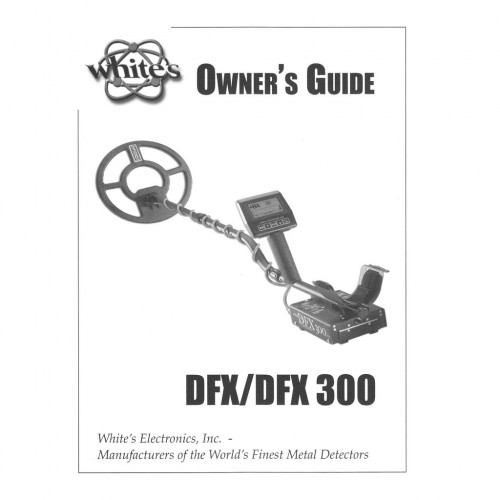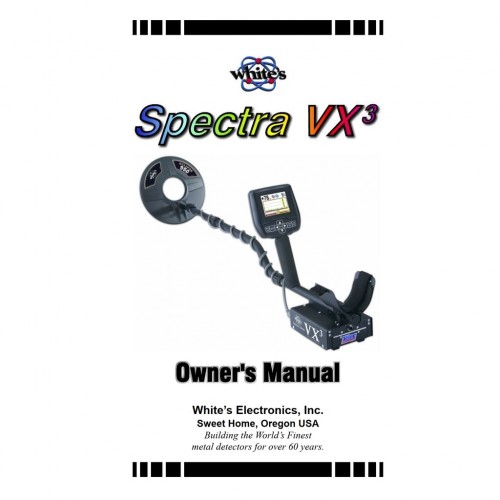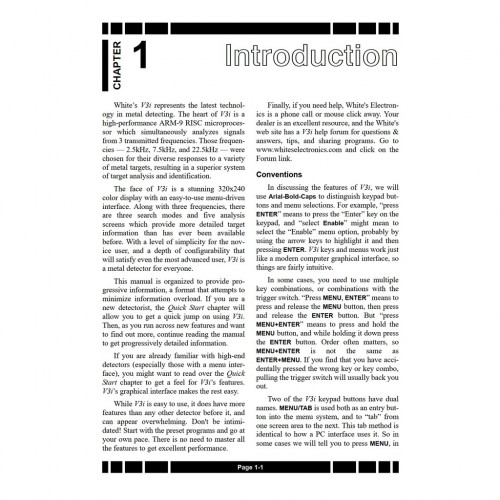Search the Community
Showing results for tags 'dfx vx3 v3i'.
-
I am a big fan of the White's SignaGraph display. A version 1.0 was originally developed for the Eagle Spectrum. The Eagle Spectrum underwent a complete hardware revamp, and was renamed the Spectrum XLT. A more refined version 1.1 of the software was matched up in the XLT with a much better LCD display. The SignaGraph was also used on the DFX, and was largely the same as on the XLT, with the addition of multifrequency options. The SignaGraph was later greatly enhanced on the V models (Vision, V3, V3i, VX3) and renamed the SpectraGraph. The genius of the SignaGraph/SpectraGraph is the ability to display multiple target id numbers at the same time, and even to choose how the target id number is determined. Here is the SignaGraph explained by its designer, engineer Mark Rowan. More details can be gleaned from the White's XLT User Guide. Spectrum XLT Engineering Note The SignaGraph™ "Phase Spectrum Analyzer" by Mark Rowan Some time ago, I had a conversation with an avid treasure hunter whose instrument of choice was White's Eagle II SL 90. He described to me a technique with which he could discern pull tabs from rings, nickels, and other desirable targets by listening for some subtlety in the audio response. Then he asked me, "If I can do this, why can't you program the Eagle's microprocessor to do it?" My response was, "If you can do it yourself, why would you want the microprocessor to do it for you?" I mention this as a means of illustrating what I consider to be the metal detector designer's fundamental dilemma, which is, as Prince Hamlet might have phrased it, "To beep or not to beep". More specifically, if you're faced with a target at some depth in badly mineralized ground and the detector has a hard time getting a solid reading on it, what do you do? If you design your detector to ignore the target, and then someone comes along with their El Cheapo brand detector and digs the target, which just happens to be a $10 gold piece -- you're in big trouble. If, on the other hand, your customers find that they're spending most of their time chiseling through eight inches of hardpan and finding bent nails and wads of aluminum foil, you're not much better off. The point I was trying to make with the gentleman who had devised the clever pull tab discriminating scheme was, that if you put too much of that kind of "intelligence" into your metal detector, there are always going to be those targets that you miss because the machine got fooled. Which brings me, of course, to the newest White's model, the Spectrum XLT. The Spectrum XLT has all of the features, performance, and flexibility of previous members of the Eagle series, plus a new display which makes the instrument remarkably easy to use. It also makes use of a new way of displaying information about targets -- the "SignaGraph™ or "Phase Spectrum Analyzer" -- which shows the operator everything that we currently know how to display about the characteristics of metallic objects in the ground. In this way, we have gone a long way towards addressing the dilemma I mentioned earlier. The Spectrum XLT is a very "smart" detector, but it is also an "honest" one. Having done the best it can to determine the probable identity of a target, the Spectrum XLT gives you all of the information you need to make your own decision (human beings are, despite what you might have heard, still a whole lot smarter than computers) to dig, or not to dig. Before I begin to describe in some detail what the SignaGraph™ is and how it works, I should emphasize that you don't need to know how it works in order to use it effectively, and that the best way to learn how to use it.... is in the field. In a very short time you will begin to recognize certain display patterns as being characteristic of certain types of targets. I should also point out that even if you ignore the SignaGraph™ altogether, this instrument still has the audio discriminator, V.D.I. number, that its predecessors had, plus the icons, and some significant improvements in terms of weight, physical size, and ease of operation. White's SignaGraph display For many years, White's has built detectors which identify targets based on a V.D.I. number (V.D.I. stands for Visual Discrimination Indicator) which characterizes metallic objects according to their size, shape, and composition. The V.D.I. scale on the Spectrum XLT runs from -95 to +95. Large positive numbers typically indicate objects which are good electrical conductors; for example, silver dollars will come in at 92. Smaller positive numbers usually indicate objects which, because of their size, shape, or composition, are not as conductive; nickels will read about 20 and aluminum foil may come in near 5. Large negative numbers are typical of targets which are readily magnetized, but which conduct electricity poorly or not at all. Some sands or soils which have a high concentration of ferromagnetic minerals may read -93. Metals containing iron have both magnetic and conductive properties, which causes them to spread over a wide area of the scale, although most typically iron objects will fall in the range -30 to -75. The V.D.I. reading is an excellent way to determine the identity of most commonly occurring targets, although I might mention in passing that the only 100% reliable discriminator is called a shovel. However, as a famous metal detector engineer once said, "Life is grossly unfair" (actually, there is no such thing as a famous metal detector engineer, and life really is fair, it just doesn't want anybody to know). For one thing, the signal which a detector receives back from even moderately mineralized ground is typically much stronger than the signal it receives from the targets buried in it. This makes determining an accurate V.D.I. number for a target at any substantial depth a very challenging business indeed. Furthermore, some targets will cause an abrupt change in V.D.I. response during the course of a single pass under the loop; the most notorious of these are the dreaded bottlecap and the dreaded small piece of foil near the surface in bad ground. Enter, as they say, the Spectrum XLT. The SignaGraph™ is very similar in some respects to the familiar analog V.D.I. meter. The display is calibrated from left to right in V.D.I. units, from -95 to +95. When the loop is passed over a target, a V.D.I. determination is made, and a vertical bar is placed at the appropriate place on the scale; near the right end of the scale, say, for a reading of 78. So far, this is just what an analog V.D.I. meter would do. At this point, the similarity ends. An analog meter can indicate only one value at a time; with the SignaGraph™, up to 30 readings can be displayed simultaneously. Also, the vertical height of the bars in the display has significance; the height can either be used to indicate signal strength or a running total of the number of readings at that point on the scale ( the operator may choose which of these two indications is to be used). The advantage of this type of display format becomes evident when the loop is passed over a bottlecap or some other flat, thin iron object. Although the instrument may respond with a loud, clear audio output, and the V.D.I. readout may register a value near the upper end, the SignaGraph™ will tend to "smear out"; numerous segments will appear throughout the display, many or most of them in the negative (typically iron) range. Try the same things with a coin, and you won't see the "smear"; typically you will see 1-3 bars grouped closely together near the top end of the scale. If any smearing does occur, as it might on a deep coin in bad ground, the more accurate readings will stand taller in the display and will tend to persist from sweep to sweep. Another unique advantage of the Spectrum XLT is the ability to make use of information gathered during the course of multiple sweeps of the loop. For years, clever detectorists have realized that by passing the loop over the target repeatedly and mentally keeping track of the range over which readings appear, and the most frequently occurring numbers within that range, they can achieve the highest possible accuracy on really tough targets. The Spectrum XLT performs this operation automatically. The standard mode of operation is the so-called "Graph Averaging" mode, in which a continuous count is kept of the number of readings that fall into a particular slot in the graph. This might also be a good time to mention that more than one V.D.I. determination is made during the course of a sweep; sometimes as many as 6 or 8 readings will be taken during a single pass, so it only takes a couple of sweeps for the effect of averaging to become significant. What you will see in the field will be a single bar on the display which will "grow" until it stands out prominently above the other bars on the display. Although it is not necessary to adjust them, there are a number of controls that allow you to customize the way that the graph is displayed. It can be set up to clear itself on each sweep of the loop, if you find that too much information is persisting in the display for too long. Or, you can configure it to let the vertical bars fade slowly out of view. Even the rate at which this fading takes place is adjustable. If you don't want to be bothered with any of that, then don't be. The factory preset settings should work just fine for almost anyone. For those of you who want to know an explanation of Accumulate, Average, and Fade, one is included in this Guide. If all of this sounds confusing or mysterious to you, allow me to put your mind at ease. The Spectrum XLT is one of the simplest-to-operate detectors you will ever use. I shall describe just how and why it is so easy to use momentarily; but before I finish talking about the SignaGraph™, I want to say it one more time-- you don't need to be a Nobel Prize candidate to figure out what the display is telling you. The usual response from somebody seeing it for the first time is something like: "Okay, I get it now. Now leave me alone and let me hunt!" What is it that makes the Spectrum XLT so easy to use? The key is something that is known in the software business as a "menu-driven interface". To implement that, we have used what is known in the display business as "A True Graphics Display". What all of this means to you, the user, is that all of the controls and options are listed clearly in plain English on the display. A flashing arrow appears on the screen next to one of those options; you can move the arrow up or down with the two "arrow" keys on the 5-key touchpad. When the arrow is next to the control you are interested in, you push the ENTER key. That is everything you need to know to run this machine. If you are like me and you hate reading instruction manuals, I believe I can safely guarantee that you will be able to operate the Spectrum XLT successfully your first time out without ever having to open the cover -- although the manual should be extremely helpful if you want to fine-tune the performance of your detector by adjusting any or all of a rather lengthy list of professional options. Incidentally, another name for this method of running a machine is the "point-and-shoot" method; you point at what you want, then "shoot" with the ENTER key to make it happen. Finally, for those in a hurry, there are a number of "shortcuts" designed to make accessing commonly used features as fast as possible. What makes the Spectrum XLT even easier to use are the factory preset programs (like those in previous Eagles) which you can load with just a few simple keystrokes, following the prompts in the display. These programs configure the machine automatically so that the beginner or casual treasure hunter can expect a great deal of success over a broad range of conditions. Any attempt on my part to detail all of the advanced features and controls which the Spectrum XLT has to offer would probably leave me with blisters on both of my typing fingers. Suffice it to say that all of the features we have had in previous state-of-the-art detectors are here in this one, plus several new ones. Most of the features are there because somebody asked for them -- the moral of the story being, keep those cards and letters coming, and we will continue trying our best to give you the kind of detector you really want. Mark Rowan was a Senior Engineer for White's Electronics, Inc. Mark holds degrees in General Science, and Electronics Engineering Technology, and is a graduate of the University of Oregon. His background includes satellite communications and RF test and measurement instrumentation. White's SignaGraph examples from Spectrum XLT manual
-
Being using the eleptical eclipse 10x6 & the small shooter. The vdi on both those coil are the same With our ozzie $2 54 & $1 55-60 10 cent 19. 20 cent 37 50 cent 47 5 cent 14 N now i havent used the 10 inch for a long time but tried it today, 10 cent was spot on 19 but the other number were way out. Could this be a crook coil. It ground balances spot on. Regards.
-
The "Spectra Circle "has closed ... I got the Spectra Vision ... I think it is one of the few original Visions available in Europe. .so I will be able to make some direct comparison of Whites Vision from Spectra V3 and Spectra V3i ... Are there any differences in performance ....? I heard from a colleague that the "Vision" has the most raw power and therefore 15-20% is the deepest .. Is that true? ... We'll see ... and maybe we'll be surprised ... Another thing that is of great interest is the wireless transfer of programs between detectors Whites Vision and Spectra V3 - in theory it should work. So we'll see .. Other observations and opinions and tests regarding Vizion, Spectra V3 and V3i....by writing in this article ..
-
Hey guys, Ive got a unusual problem w this V3i. I’m getting a overload report w the 10” DD coil, as soon as you squeeze trigger to get out of the menu. I have it configured for the 10” in the settings too. I’ve even tried the 2 other coils I have and it’s works fine w those. Any ideas? Thanks, Aaron
-
Steve, What program/settings do you use for jewelry hunting with the V3i?
-
Hi, Dan from U.K. I have been using a V3i since November last year and enjoy it immensely. However, today I had an issue with the machine flashing random numbers and beeping even when held at shoulder height. This continued when I tried single frequency modes and when I changed to a different coil Also in different locations. Has anyone experienced this problem?
-
Hi Jeff. Did you have some testing time with your new Spectra? How do you like the SpectraSound WHP? I do like them a lot since I use them.
-
This is just a fun comparison because there is no way I'm going to buy another detector at this point but near me I see a good looking used DFX for the price of $250. That is so similar in price to the Simplex that I am interested in which would be considered the superior detector or at least how they stack up. From what I know they are both considered coin and relic detectors, the DFX is multi-frequency, and the Simplex is considered to have many of the newest features at a low price point.
-
The manual says something different than the detector will show.
-
I have really been enjoying using the Whites DFX for the last month. Mine came with the stock 9.5" coil and I bought a used Detech 8X6" SEF for it too, all of which cost way less than half the original retail price. It won't get much depth in my area, but it is a very feature rich detector with a ton of information using all of the display functions and full tone ID. It almost IDs 4" low to mid conductor targets (don't laugh) with good numbers in the moderate to highly mineralized dirt in my area as well as the Equinox and Vanquish, although they will give correct numerical IDs down to 8 to 10" targets easily. I love the full tone ID, Signagraph display and the excellent ergonomics of the DFX. I do not like the lack of depth and the feeling that I am walking over good targets mostly caused by the limitations put on the DFX with how it was engineered......Salt compensation is always on, underpowered single frequency operation, EMI susceptibility and nebulous ground tracking. So, I started looking at Whites other multi frequency VLF: the Vision, VX3, V3 V3i series. Why have I never been interested in these detectors before??? There was a fully equipped, well taken care of V3i for sale in my area with multiple coils and other extras for about half or the original retail price plus I knew the original owner who is now deceased. I picked it up for even less than the asking price. When Steve says there has never been any detector like the V3i he is making a gross understatement. This detector is incredible. It is definitely not perfect. I may eventually not keep it and I may grow to dislike it BUT, what a fine detector. No denying that. If you have never owned/used one and you are even slightly interested, I would get one before they are really hard to find. Yes, it is a complicated, highly detailed jumble of possible combination of settings, but for the most part I think I can handle them eventually. I probably would not use it for prospecting or for iron trash infested sites but for everything else it would be like driving a well made luxury car that actually performs as well as its luxury price tag. It is a bit heavier than the DFX but it has even more features, adjustability, and power than the DFX. In my area, the V3i handles EMI as well or better than my DFX. I actually dug a 6" nickel yesterday in pretty bad dirt with the V3i. That is not a big deal except that the DFX (which I had with me too) totally missed it in modified coin and jewelry mode (I mean silence over the target) and the V3i with similar settings and the same Detech coil hit on the target AND identified it well enough that I knew it was probably a nickel before I dug it. Up until now, only simultaneous multi frequency detectors made in Australia/Malaysia can do that in my area. Jeff
-
Looking at Uber expensive detectors. As we all know White's is on the way out and the V3i will not be available long. This may be the last chance to get hands on a factory new unit. In light of that it has crossed my mind to get one as a historical investment. Now with all that out of the way, we know it is heavy and that it loves batteries but can use Ni-MH batteries in the pack. Weight, nothing we can do about that. My mind is more about the longevity of the V3i, is it a very durable detector? I know all about the multitude of settings, and that is one thing that draws me to it. A Tinkerer's dream, more like a computer than a detector. Bottom line, is it worth the price? XP Deus. Had an ORX a while and loved the weight and ease of use. Hated the wireless headphones and they dug into my ear but I tell ya when it is hot weather that would sure be better on you. The ORX was somewhat crippled compared in settings, only giving 3 tone audio. It also had higher frequencies than the X35 coils do. The model I am looking at is the one with WS4 headphones and 9" round X35 coil. Between those 2, which is worth the bucks?? Thanks Rob
-
Maybe it's just in my neck of the woods, but I'm seeing Craigslist, Facebook Marketplace, Treasure Classifieds, and EBay with more of these for sale than I've ever seen before. I have to believe it's due to the past and present releases of waterproof and multifrequency models. That and what seems to be a discontinuation of the VX3 for a dwindling supply of certain components. Just a note to anyone who might've wanted one to keep your eye out. Some pretty good deals to be had. To me it's still a relevant and awesome platform. The V3i remains my number 1 go-to even after having machines like the XP Deus and presently having machines like the Equinox 800 and CTX-3030. Aside from the CTX you're really not going to get as much target information from any other machine. For those that hunt in places where there are a lot of deeper isolated targets that warrant some interrogation it's hard to imagine a better machine at the moment. I've seen some sales that include the wireless headphone and several coils like the Ultimate 13 go for $500.
-
My Craigslist Whites DFX purchase happened successfully......... I brought it home, stock 950 coil and original 1.0 software with two battery packs, $250. After making the mistake of turning it on in my backyard using preset Coin and Jewelry mode and listening to R2D2 have a heated conversation with me I almost called up the guy that sold it to me in order to return it. Then I had a momentous, cogent revelation and remembered that the DFX is simultaneous multi frequency, so I figured out how to get into the basic adjustment menu and lowered the AC sensitivity to 40. Whewwwww. Problem solved. In my house I have to run it at below 30 sensitivity but that is fine for learning how it works and learning how it responds to targets. I have to do the same thing with the Equinox. EMI in my area sucks!!!! I really like this detector. I can usually tell in minutes of actual field use whether a detector is going to work for me in the short or long run. This Whites model looks like a keeper. My DFX has already been on two 2 hour hunts and even though I did not challenge it with super deep targets or with lots of trash (2 baseball/soccer field hunts) I can easily see both why this detector could drive some people nuts (in full tones) and why some people that I know personally, absolutely cleanup on coins and jewelry in the shallow to 6" depth with a big foot or SEF coil. I have seen them do it repeatedly at club hunts. It happened again yesterday at an impromptu wild targets club hunt......... I have the mighty Equinox and I am coming in second or third to a guy with a DFX in both quantity of coins and value along with good jewelry finds too and I worked my butt off. I did out hunt the XP and Garrett guys however...... The DFX has really good target ID and I particularly like the full tones (which I still don't like much on the Equinox and could not stand on the Deus) and all of the easily accessible settings. Now I have to learn what those adjustments do and how they may help in moderate to high mineralization. The in-ground and air testing that I have been able to do in the coin and jewelry mode and the prospecting mode with the 950 coil has been very comparable to my previous M6, MX5 and MX7 results. It will hit sub-gram gold ( .25 gram) easily in prospecting mode. It actually has more accurate target ID than the M6, MX5 and MX7 in my dirt and I really like those detectors except for their single frequency and slow recovery speed. I look forward to picking up a decent 10X5 elliptical DD coil for my DFX and maybe a small concentric down the road. Very impressed for an 18 year old detector Jeff
-
Anyone that has read some of my posts knows the problems I have with high mineralization. There are two Whites DFX multi frequency detectors for sale in my area with stock coil that are in great shape and will be less than $300. Is there any reason I should consider purchasing one of these detectors? Will the DFX have anything that the Equinox is missing? Will the DFX even compete with the Vanquish or the upcoming Apex? Jeff
-
This guy did a beautiful job waterproofing the V3i.
-
...or is this only because empty stock? Seems since a week the VX3 isn't listed anymore on the White's sites (US & UK). Are there any informations floating around?
-
What is White's DFX Spectrum worth these days? Is it worth the effort to learn? Does it have a place with today's detectors?
-
How can I find gold rings better with my Spectra V3.. if I dug every Target that sounded like a ring or said it was a ring I would dig Millions I'm just confused and would like to narrow it down better does anybody have any pointers
-
Hello all. I was wondering if it's possible to customize the tones on the VX3. I know you can assign tones to all the vdi #s on the V3i and even change the tone pitch on the XLT and DFX, but I did not see where you can alter the tones on the VX3. Maybe i missed it in the manual. Does anyone know? thanks.
-
Hi, I have found several references to this but none of the links work, does anybody have a copy please?
-
-
-


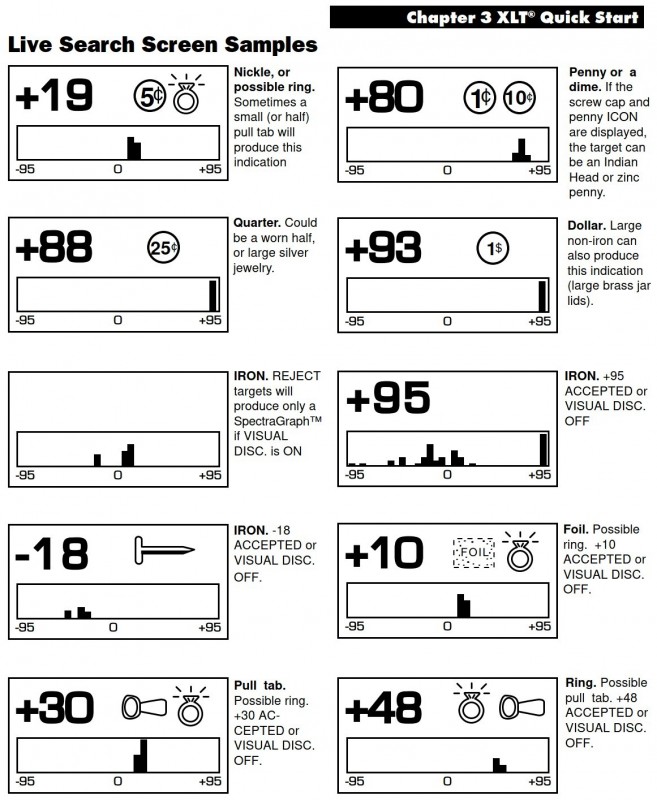
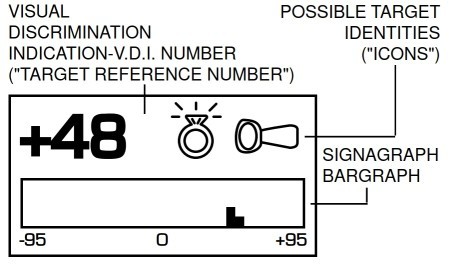
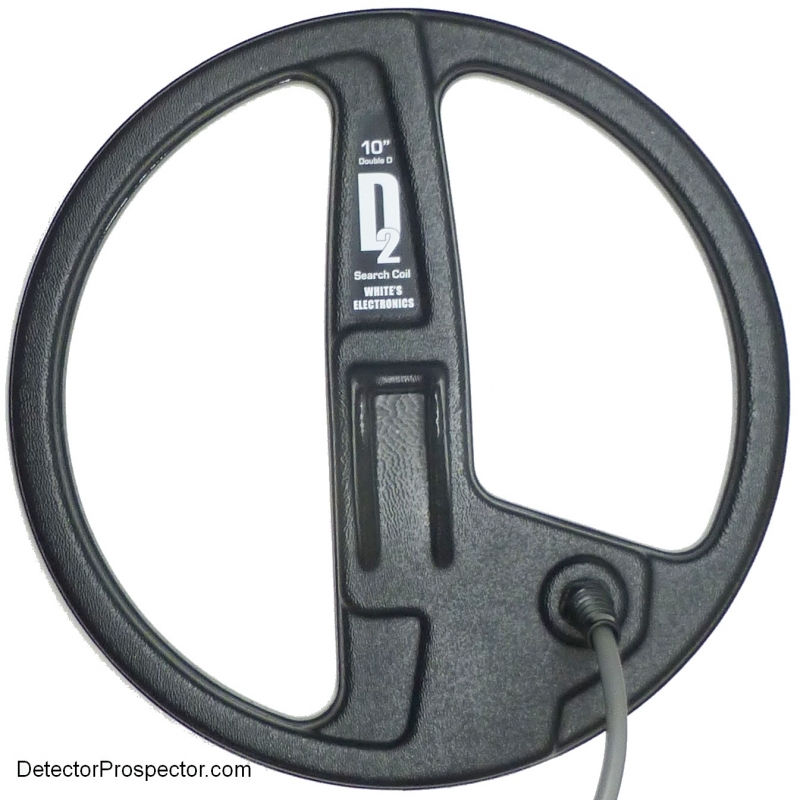

.thumb.jpg.f8f896a944f8baa376640b97115b79cf.jpg)

